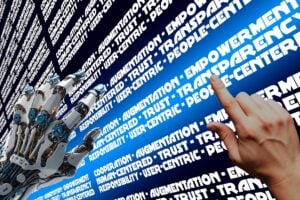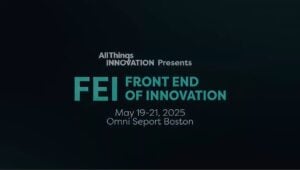Embracing Disruption
In essence, this focus on self-disruption gives management and the company the leeway to become agile entrepreneurs and creators, to develop and accelerate an innovative culture, optimize resources, integrate risk and to undergo a collective learning process. This can be a long-term commitment with an eye on the future and to transform the company’s way of doing business. Of course, it can also be a risky bet, as it can potentially lead to cannibalization of revenues and relying on untested products. Short-term, it can be an unprofitable process. The transition period between these phases can be filled with risk.
A clear strategy is certainly needed to envision the future. Transformations shouldn’t be seen as a one-off, short-term project. Instead, one must inspire and empower employees to carry out the new vision. Lastly, executing that vision with innovation and agility is key to adapting to evolving marketplace conditions.
As Workday SVP Leighanne Levensaler puts it in her blog, “Why Businesses Must Self-Disrupt to Thrive in the Digital Age,” “Embracing disruption means businesses must be agile, able to react quickly to changing market conditions and roll out new products and services globally. They need to be able to scale up rapidly. They embrace change and view innovation as a long-term strategy, not a short-term fix.”
Balancing the Self-Disruption Journey
All Things Innovation has explored the topic of disruptive innovation in several blogs. In “Sustaining the Self-Disruption Journey,” we looked at the adage “disrupt or be disrupted” and how innovators oftentimes are in a balancing act between disruptive and sustaining innovations. This leads to the question: Should disruption be self-inflicted?
Looking forward to FEI 2024? The conference, which will be held June 10 to 12, will feature a panel session called “Self-Disruption: Balancing Short Term Gain With Long Term Meaningful Value,” presented by Mark Slavens, President and Chief Operating Officer, Nano-Yield. Regenerative agriculture. Stewarding the land. These have always been the central tenets of the farming community. Nano-Yield is developing nano particle technology to increase quality and yield, leading to solid ROI for those farmers. This session explores the application of next generation technology in a traditional industry like farming and provides a blueprint for utilizing those same principles in any industry, such as sustainability, optimization, self-disruption, and resilience. Register for FEI 2024 here.
The Road to Continuous Improvement
Self-disruption refers to a deliberate strategy where an organization proactively disrupts its own business model, products, or processes to drive innovation and maintain competitiveness. Here’s how self-disruption can lead to innovation, according to ChatGPT:
- Encouraging a Culture of Continuous Improvement: Self-disruption forces an organization to critically assess its existing processes, products, and strategies. This mindset of constant evaluation and improvement creates a culture where innovation is not just an occasional event but a continuous effort.
- Identifying New Opportunities: Disrupting one’s own business model or products often leads to the discovery of new opportunities. Through self-disruption, organizations can identify unmet customer needs, emerging trends, and untapped markets that can become the foundation for innovative offerings.
- Challenging Assumptions: Self-disruption prompts organizations to challenge their own assumptions about what works and what doesn’t. This process can lead to rethinking long-held beliefs and finding new ways to solve problems or meet customer demands.
- Fostering Creative Thinking: The need for self-disruption requires teams to think creatively and explore unconventional solutions. This mindset shift encourages employees to generate innovative ideas that might not have been considered otherwise.
- Overcoming Complacency: Organizations that have been successful for a long time can become complacent and resistant to change. Self-disruption shakes up the status quo, helping to overcome complacency and encouraging a willingness to embrace new ideas.
- Embracing Risk-Taking: Self-disruption involves calculated risk-taking. By willingly taking risks and stepping outside the comfort zone, organizations create an environment that encourages experimentation and innovation.
- Driving Organizational Learning: Self-disruption forces organizations to learn quickly from failures and successes. These learning experiences contribute to a more adaptable and agile organization that can respond effectively to changes and challenges.
- Staying Ahead of Competitors: By disrupting themselves, organizations can pre-emptively address potential competitive threats. This proactive approach helps maintain a competitive edge by continually evolving in response to market dynamics.
- Creating a Sense of Urgency: Self-disruption introduces a sense of urgency to innovate. This urgency can motivate employees and stakeholders to actively participate in the innovation journey and drive meaningful change.
- Building Resilience: Organizations that are open to self-disruption develop a higher level of resilience. They are better prepared to navigate disruptions and uncertainties, which are essential skills for long-term success in a rapidly changing business landscape.
- Reinforcing Adaptive Leadership: Self-disruption requires strong leadership that is willing to challenge the status quo and drive change. This emphasis on adaptive leadership helps guide the innovation journey effectively.
Fueling Growth Dynamics
The dynamic nature of business means constant change, while balancing those short-term and long-term innovation initiatives. As Workday notes in its blog, it may be that technology, as well as digital transformation, could be the key to fueling that growth in the future. “If businesses are to fully embrace disruption, they need to completely rethink the role of technology in supporting agility, innovation, and growth. They can’t expect what worked yesterday will work for tomorrow.”
Video courtesy of Rick Kettner
Contributor
-

Matthew Kramer is the Digital Editor for All Things Insights & All Things Innovation. He has over 20 years of experience working in publishing and media companies, on a variety of business-to-business publications, websites and trade shows.
View all posts






















































































































































